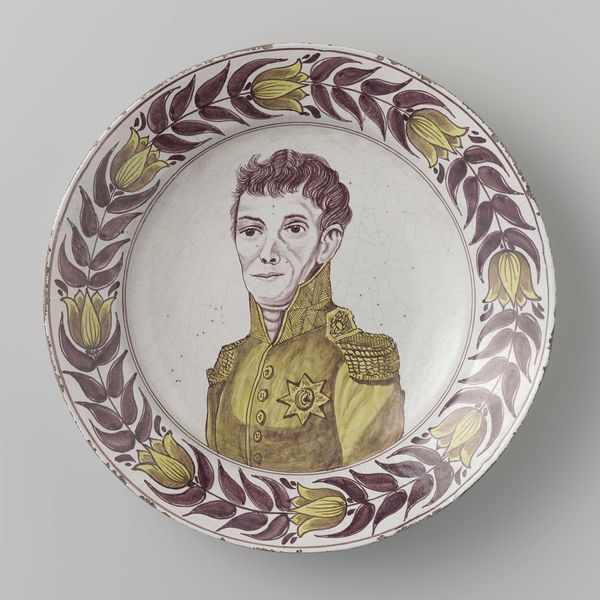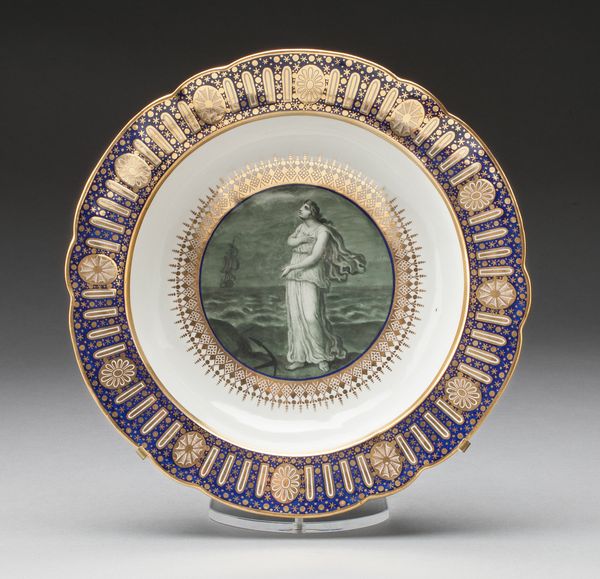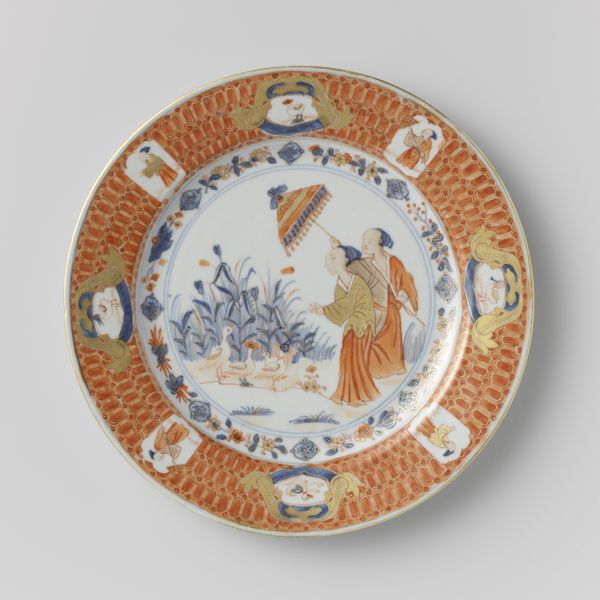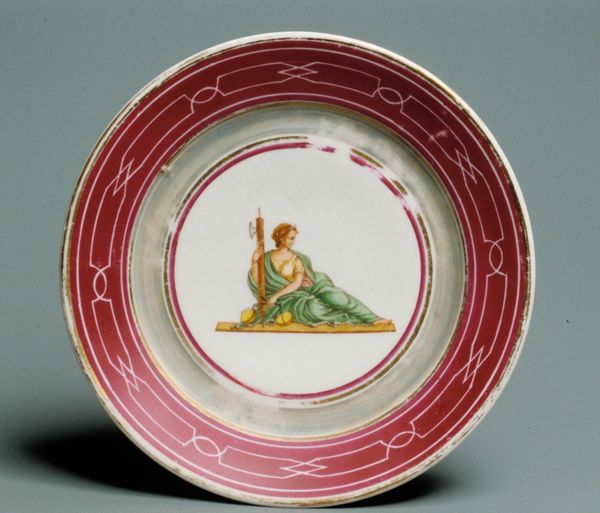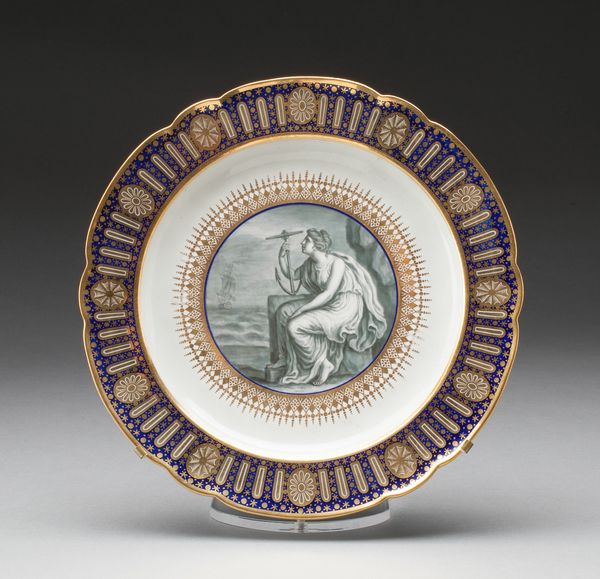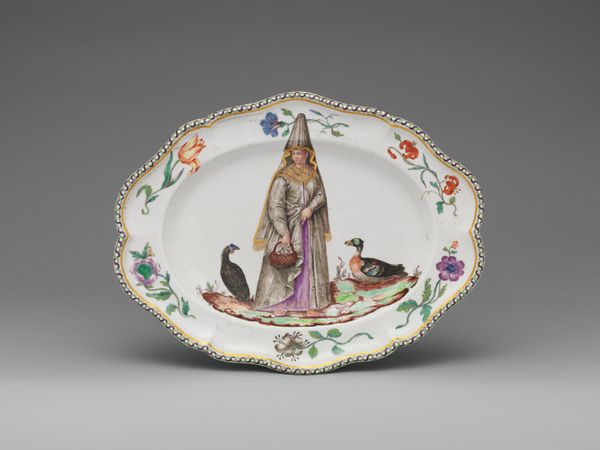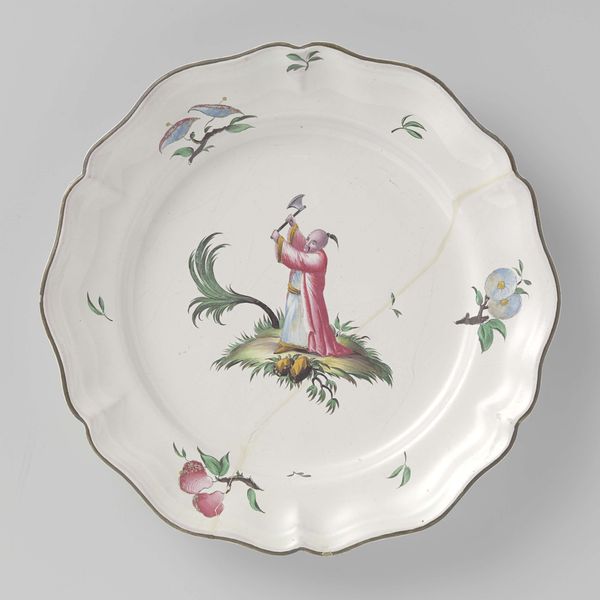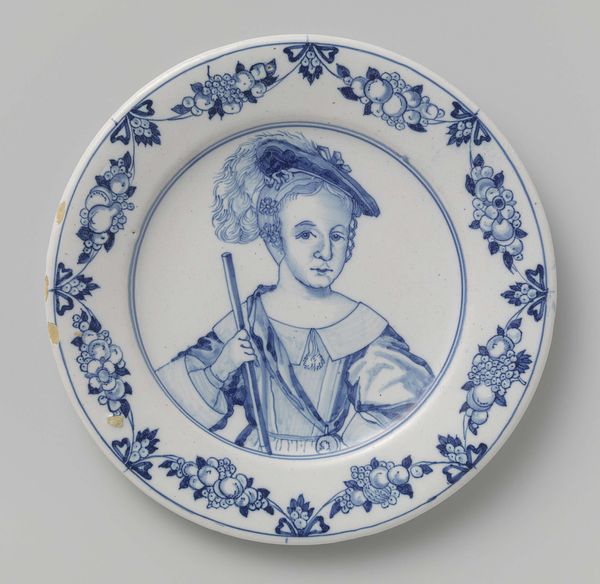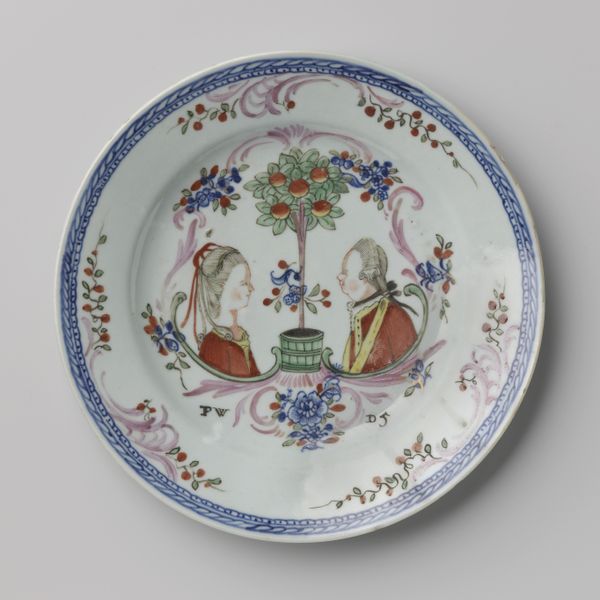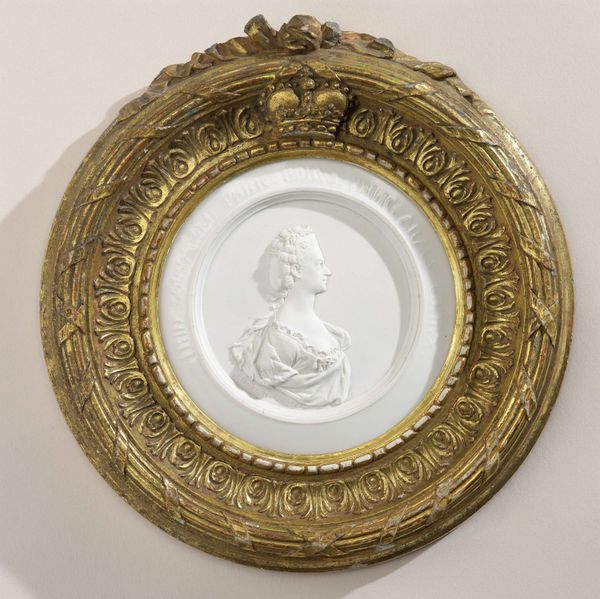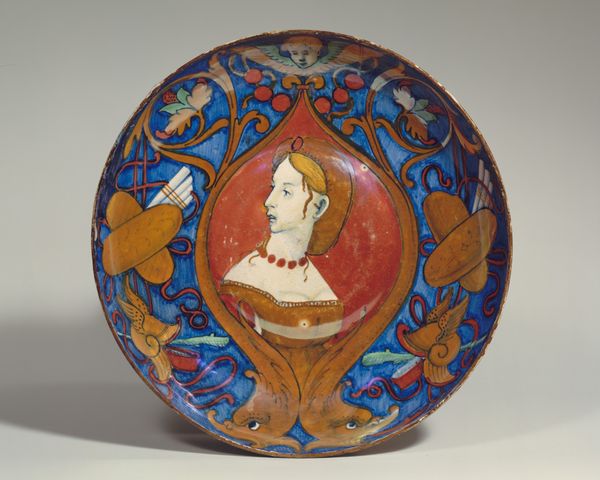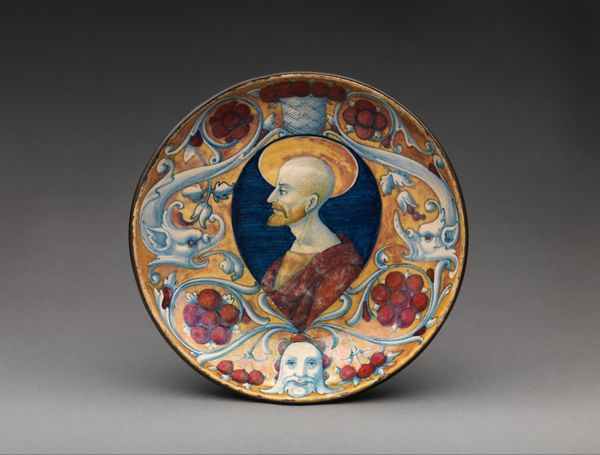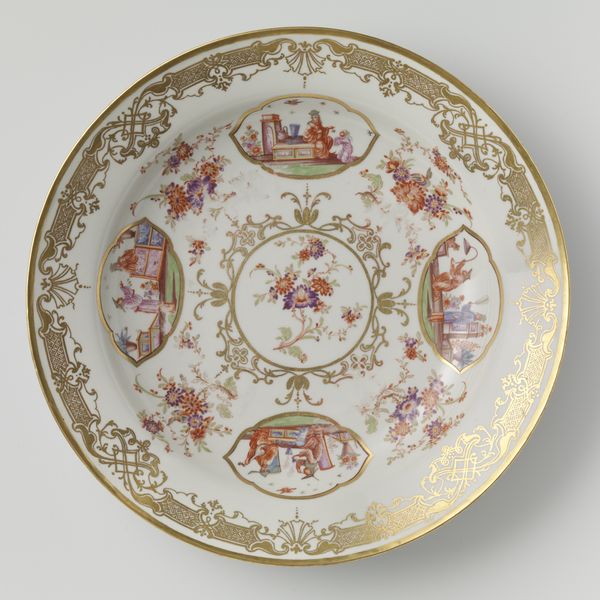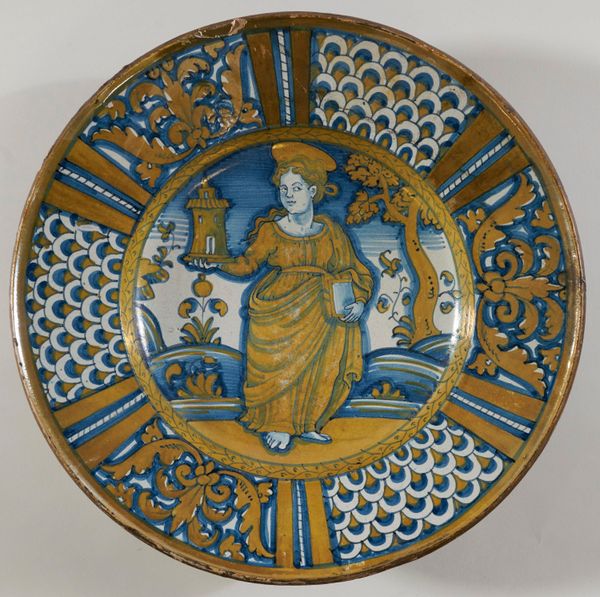
painting, ceramic
#
portrait
#
neoclacissism
#
painting
#
ceramic
#
figuration
#
ceramic
Dimensions: diameter 34.8 cm, height 6 cm
Copyright: Rijks Museum: Open Domain
This faience plate features a portrait of Wilhelmina Frederica Louisa of Prussia encircled by stylized floral motifs. The tulip-like flowers arranged around the rim are not merely decorative. They are potent symbols reflecting the cultural and economic fervor of the Dutch Golden Age, when tulips were objects of immense value and speculation. Consider how these floral motifs echo across time, reappearing in different contexts, from Flemish still life paintings to contemporary designs. The tulip, once a symbol of wealth and status, evolved into a more generic emblem of spring and beauty. This evolution reflects our collective memory and subconscious desires, revealing how we continue to imbue simple forms with profound significance. Think about the psychological impact of surrounding oneself with such imagery, how it taps into a primal appreciation for nature and beauty, engaging us on a deep, subconscious level. These symbols resurface, evolve, and take on new meanings, their cyclical progression reminding us of the enduring power of cultural memory.
Comments
No comments
Be the first to comment and join the conversation on the ultimate creative platform.
